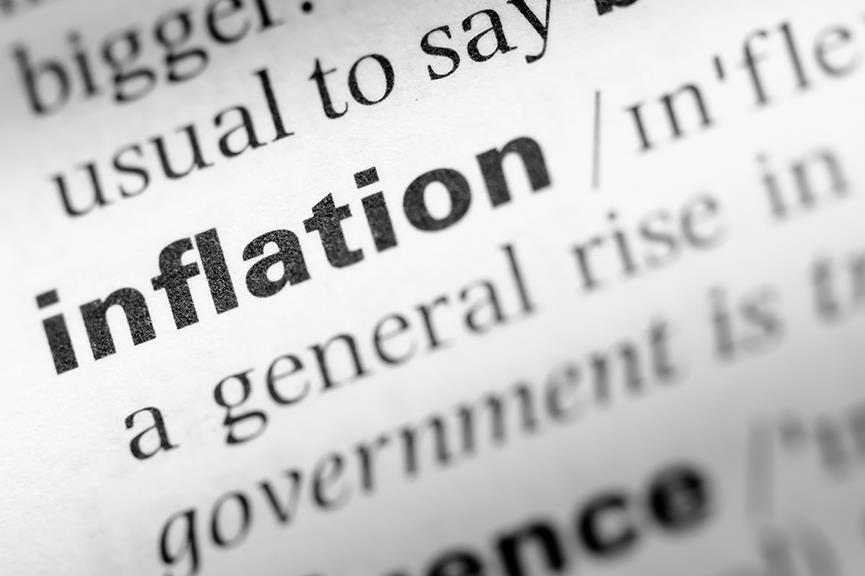11-Jun-2017
Egypt Economics - Inflation slows Y-o-Y in May for the first time since float; base case is rates on hold in 2H17, but ST rate risks now tilted to upside

Inflation maintains deceleration course in May
Headline consumer price inflation was unchanged at 1.7% M-o-M in May, still at its slowest pace since the November 2016 float, with food inflation easing to 2.0% M-o-M from 3.2% M-o-M in April. Non-food inflation, however, accelerated to 1.3% M-o-M, driven almost entirely by a 27% increase in the price of Umrah (religious tourism) in a delayed adjustment to a weaker EGP. Excluding this increase, headline inflation would have increased only 1.1% M-o-M, another low since the float, confirming our view that the inflationary shock, initiated by structural reforms late last year, has been largely absorbed. On an annual basis, inflation saw its first deceleration since the float at 29.7% Y-o-Y in May from 31.4% Y-o-Y in April and slightly higher than our expected 29.1%. The drop largely reflected slower food inflation (41.1% vs. 43.6% in April). Core inflation also slowed to 30.6% Y-o-Y from 32.1% in April.
Upcoming subsidy cuts to keep inflation elevated
Fiscal consolidation will shape inflation outlook in the coming few months, with measures led by the second round of fuel subsidy cuts, a 1pp increase in the VAT rate to 14%, and an annual increase in taxes on tobacco. We forecast inflation to average 24.3% Y-o-Y in FY16/17 and 17.8% in FY17/18, taking the view that subsidy cuts will be implemented in September. We forecast inflation will decelerate sharply from November, even when taking into consideration the upcoming fiscal measures, given the significant high base in 2017.
Private credit data and fiscal measures to shape policy rates in 2H17; short-term rate risks to the upside
We update our macro forecasts and policy rates outlook to account for the apparent shift in the CBE’s thinking about monetary policy, which drove May’s surprising rate hike. It appears two factors will shape monetary policy in 2H17: i) monetary data, particularly growth in private sector credit in local currency, given the recent shift in monetary policy framework (see page 2 for more details); ii) the timing of the second round of fiscal reforms. Actual inflation outturns, until the implementation of fiscal measures, are likely to be less important. We maintain our base case view that policy rates will stay on hold in 2H17, though we see risks for another rate hike if private sector credit shows no signs of deceleration and/or traces emerge of second round effects from the fuel subsidy cuts. We will, therefore, be closely watching the data points to update our views in a timely manner. In all cases, we believe policy rates will normalise over the next six to nine months – i.e., some rate hikes will be reversed – as inflation nearly halves from current levels and public sector investments slow down.
Mohamed Abu Basha
Lina Abdelfattah
Headline consumer price inflation was unchanged at 1.7% M-o-M in May, still at its slowest pace since the November 2016 float, with food inflation easing to 2.0% M-o-M from 3.2% M-o-M in April. Non-food inflation, however, accelerated to 1.3% M-o-M, driven almost entirely by a 27% increase in the price of Umrah (religious tourism) in a delayed adjustment to a weaker EGP. Excluding this increase, headline inflation would have increased only 1.1% M-o-M, another low since the float, confirming our view that the inflationary shock, initiated by structural reforms late last year, has been largely absorbed. On an annual basis, inflation saw its first deceleration since the float at 29.7% Y-o-Y in May from 31.4% Y-o-Y in April and slightly higher than our expected 29.1%. The drop largely reflected slower food inflation (41.1% vs. 43.6% in April). Core inflation also slowed to 30.6% Y-o-Y from 32.1% in April.
Upcoming subsidy cuts to keep inflation elevated
Fiscal consolidation will shape inflation outlook in the coming few months, with measures led by the second round of fuel subsidy cuts, a 1pp increase in the VAT rate to 14%, and an annual increase in taxes on tobacco. We forecast inflation to average 24.3% Y-o-Y in FY16/17 and 17.8% in FY17/18, taking the view that subsidy cuts will be implemented in September. We forecast inflation will decelerate sharply from November, even when taking into consideration the upcoming fiscal measures, given the significant high base in 2017.
Private credit data and fiscal measures to shape policy rates in 2H17; short-term rate risks to the upside
We update our macro forecasts and policy rates outlook to account for the apparent shift in the CBE’s thinking about monetary policy, which drove May’s surprising rate hike. It appears two factors will shape monetary policy in 2H17: i) monetary data, particularly growth in private sector credit in local currency, given the recent shift in monetary policy framework (see page 2 for more details); ii) the timing of the second round of fiscal reforms. Actual inflation outturns, until the implementation of fiscal measures, are likely to be less important. We maintain our base case view that policy rates will stay on hold in 2H17, though we see risks for another rate hike if private sector credit shows no signs of deceleration and/or traces emerge of second round effects from the fuel subsidy cuts. We will, therefore, be closely watching the data points to update our views in a timely manner. In all cases, we believe policy rates will normalise over the next six to nine months – i.e., some rate hikes will be reversed – as inflation nearly halves from current levels and public sector investments slow down.
Mohamed Abu Basha
Lina Abdelfattah